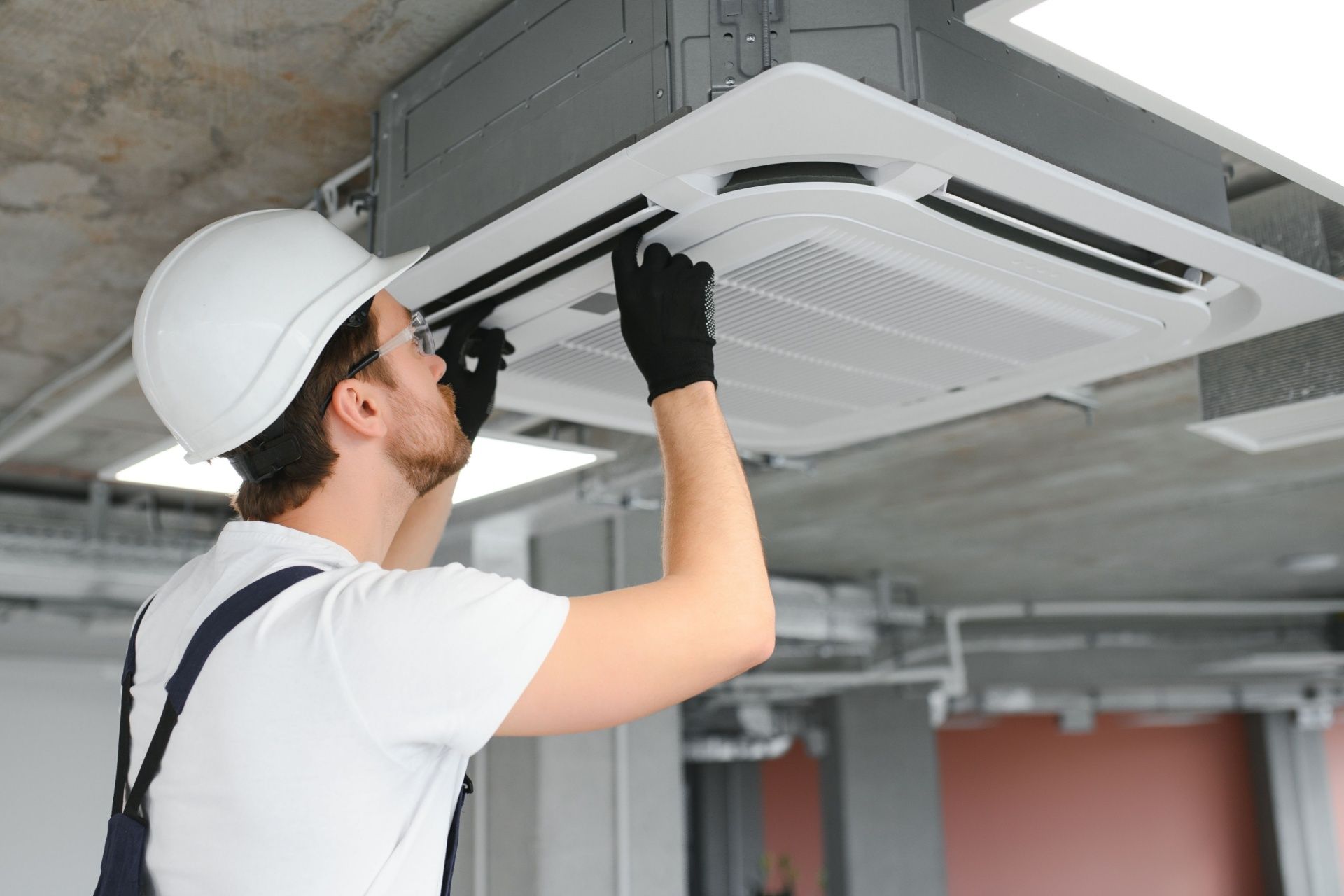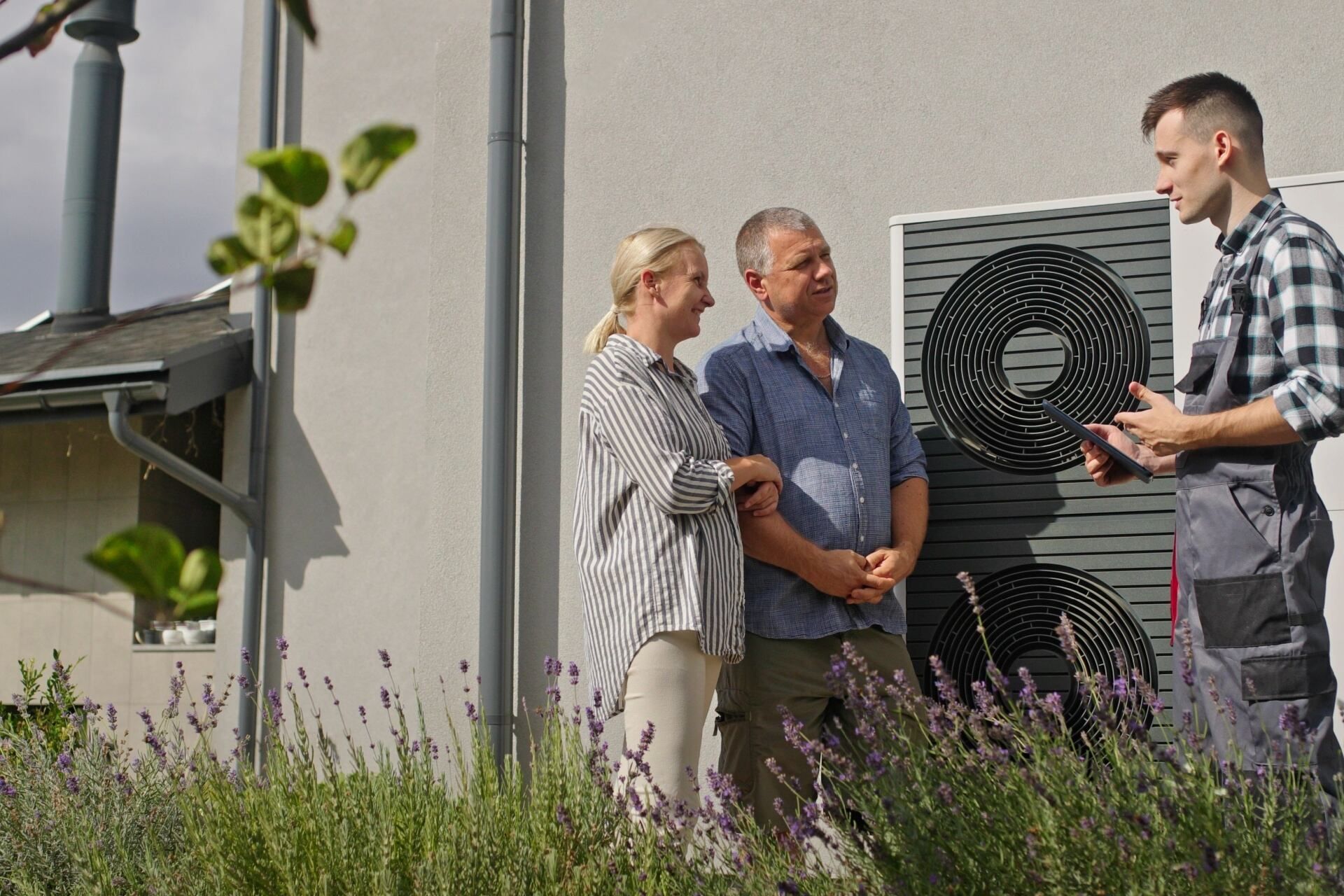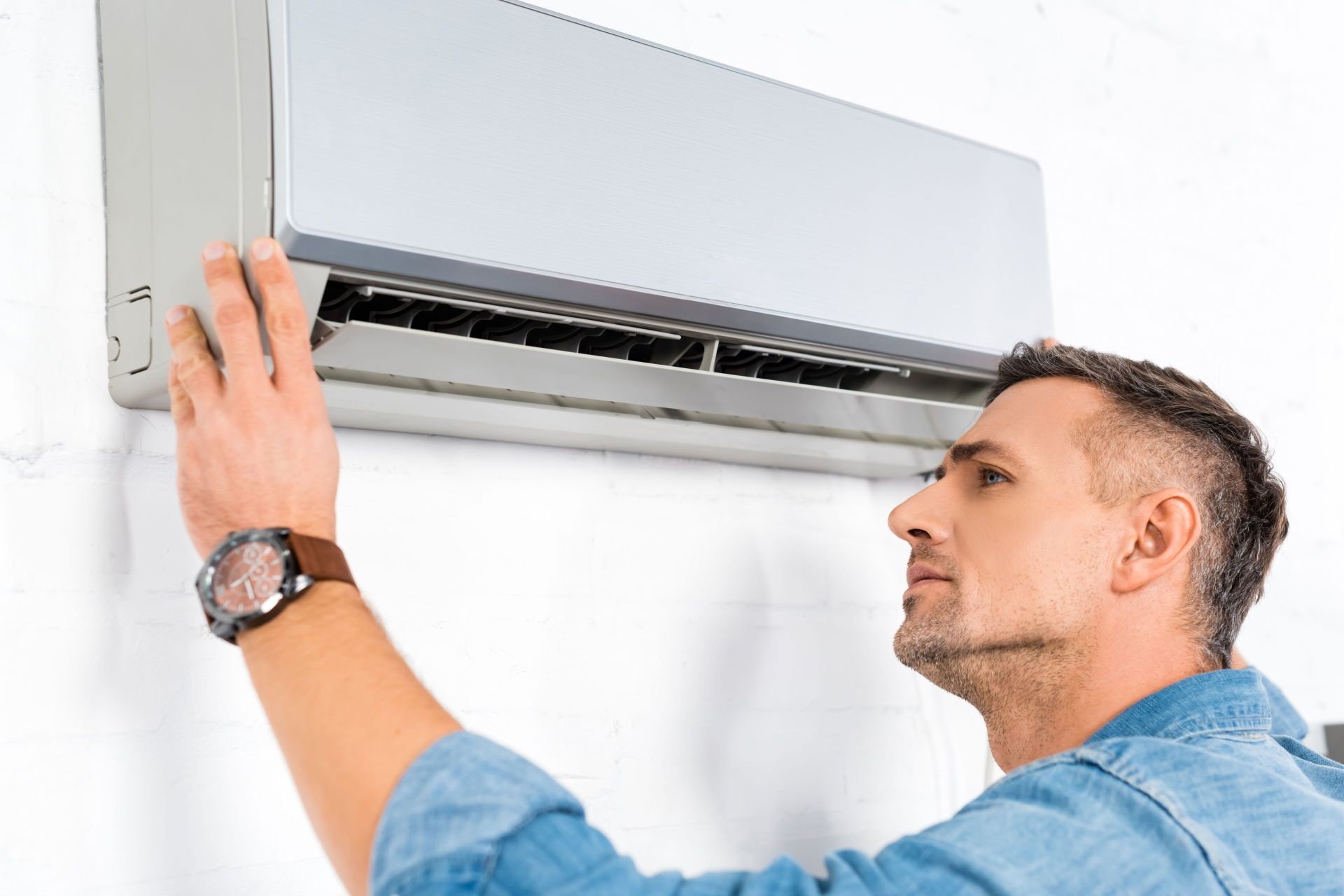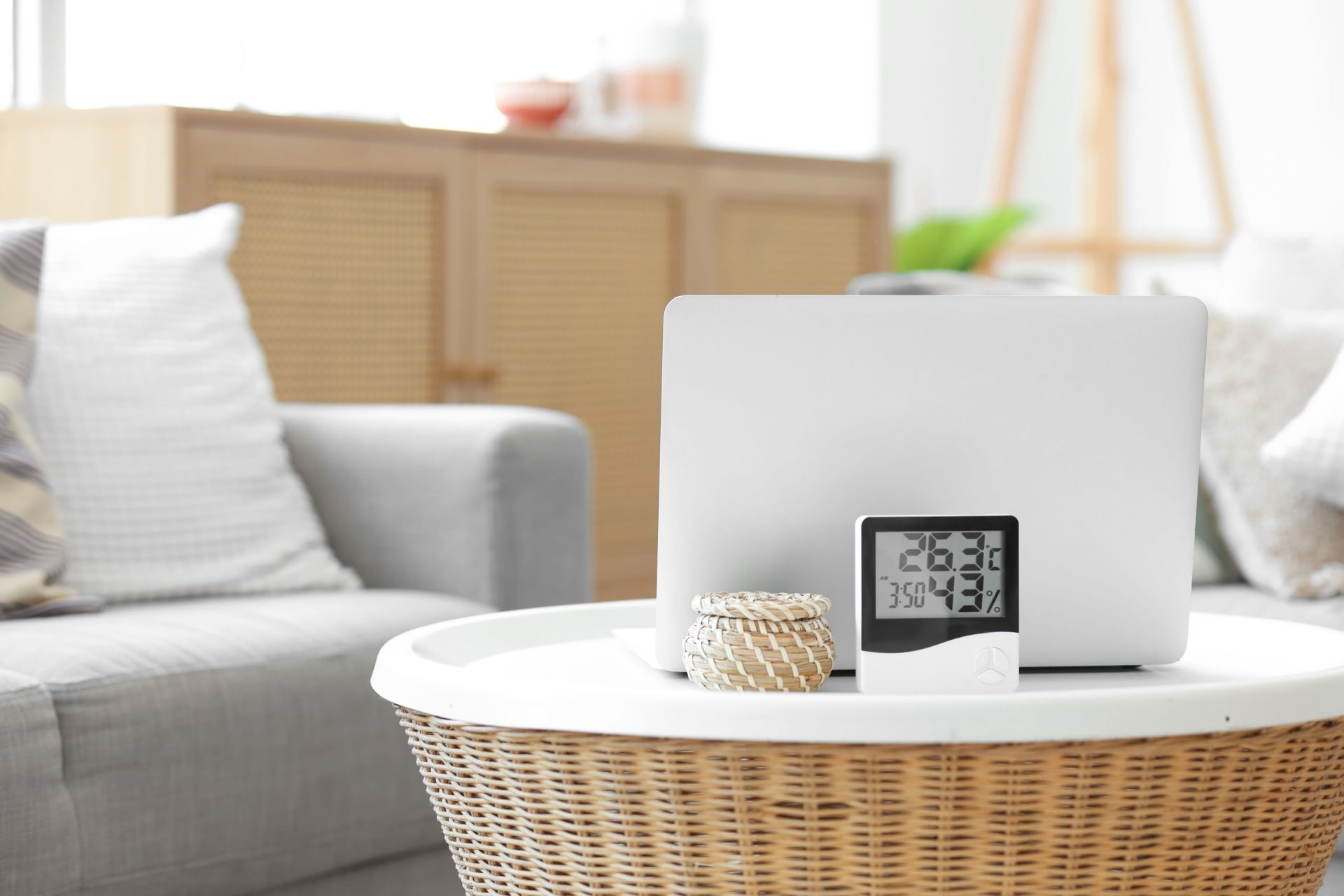How Does a Whole House Dehumidifier Work?

Have you ever walked into your home and felt that the air was sticky or damp? That’s often a sign that your home has too much moisture in the air. When indoor humidity is too high, it can make your home feel uncomfortable and even cause mold and mildew to grow. That’s where a whole house dehumidifier can help.
In this article, we’ll explain how a whole house dehumidifier works, why it's different from small portable units, and how it can improve your indoor air quality.
What Is a Whole House Dehumidifier?
A whole house dehumidifier is a system designed to remove excess moisture from the air throughout your entire home. Unlike small dehumidifiers that only work in one room, this type of system connects to your heating and cooling system (HVAC) and works on every room at the same time.
It keeps the humidity levels balanced, so the air in your home is comfortable, healthy, and free from too much moisture.
Why Is Too Much Moisture a Problem?
Humidity is the amount of water vapor in the air. When there’s too much humidity, it can cause several issues, such as:
- Mold and mildew growth
- Dust mites and allergens
- Damage to furniture and wood floors
- Unpleasant odors
- Sticky, uncomfortable air
Keeping the right humidity level (usually between 30% and 50%) helps your home feel better and stay healthier.
How a Whole House Dehumidifier Works
Let’s break down the whole house dehumidifier working process in simple steps:
1. Pulls in Moist Air
The system pulls warm, moist air from inside your home through the return ductwork. This is the same air your HVAC system would normally use to heat or cool your house.
2. Cools the Air
Once the air enters the dehumidifier, it passes over a cold coil. This coil cools the air, and as it cools, the moisture in the air turns into water droplets.
This is similar to how a cold glass of water "sweats" on a hot day—the moisture in the air turns into water on the cold surface.
3. Removes the Water
The water droplets are collected in a tray or sent directly to a drain. This way, the moisture is removed from your home completely.
4. Reheats the Air
After the moisture is removed, the dehumidifier slightly reheats the air so it doesn’t feel cold when it returns to your home.
5. Pushes the Dry Air Back Out
Finally, the dry, filtered air is sent back into your home through your HVAC ducts. This helps maintain comfortable and healthy humidity levels in every room.
Whole House Dehumidifier vs. Portable Units
You might be wondering: “Why not just use a small, portable dehumidifier?” Let’s compare:
| Feature | Whole House Dehumidifier | Portable Dehumidifier |
|---|---|---|
| Coverage | Entire house | One room |
| Size | Installed into HVAC | Small and movable |
| Maintenance | Low (may need filter check) | High (must empty water tank often) |
| Noise | Quiet | Can be noisy |
| Energy Use | More efficient overall | Can be costly if used in many rooms |
If you’re trying to fix indoor air quality for your whole home, a whole house dehumidifier is the smarter, long-term solution.
Benefits of a Whole House Dehumidifier
Here are some great reasons to install one:
Better Comfort
No more sticky air or sweaty nights. Your home will feel cooler and more comfortable, especially in Illinois humid weather.
Healthier Air
It helps reduce mold, mildew, and allergens like dust mites that love humid spaces.
Protects Your Home
Too much moisture can ruin wood floors, furniture, walls, and electronics. Keeping humidity in check helps protect your home’s value.
Saves Money
When your air is less humid, your AC doesn’t have to work as hard to cool the house. That means lower energy bills!
What About Whole House Humidification?
While dehumidifiers remove moisture, humidifiers add moisture when the air is too dry. In some places, dry air can cause dry skin, nosebleeds, and static electricity.
In Illinois, most people need dehumidifiers more than humidifiers. But it’s all about balance. Some smart HVAC systems can control both to give you perfect indoor air quality year-round.
Should You Get a Whole House Dehumidifier?
Here are some signs you might need one:
- Your home feels muggy, even with the AC on
- You notice mold or musty smells
- Your wood floors or furniture feel damp
- You or your family have allergies or asthma
- You use multiple portable dehumidifiers
If you said “yes” to any of these, it might be time to invest in a whole house solution.
How to Maintain a Whole House Dehumidifier
These systems are easy to take care of. Here’s what you should do:
- Check the filter: Clean or replace it as needed (usually once every few months).
- Clean the drain line: Make sure it’s clear so the water can flow out easily.
- Annual check-up: Have an HVAC professional inspect it once a year.
With basic maintenance, your system can last 8–15 years!
Professional Installation Matters
A whole house dehumidifier needs to be connected to your home’s ductwork and sized correctly for your space. That’s why it’s important to have it installed by licensed HVAC pros.
They’ll help you choose the right model, install it properly, and make sure it works with your existing system.
Final Thoughts
A whole house dehumidifier is a smart way to keep your home dry, comfortable, and healthy. It works quietly in the background to remove excess moisture from the air, protecting your family and your belongings.
If you live in a humid area like In Illinois, most people need dehumidifiers more than humidifiers. But it’s all about balance. Some smart HVAC systems can control both to give you perfect indoor air quality year-round., installing one could make a big difference in your everyday comfort—and your energy bills too!
Ready to improve your home’s air quality? Contact GNV Heating and Air Conditioning today for a free consultation on whole house dehumidifiers!
FAQs: Whole House Dehumidifier
What Is a Whole-House Dehumidifier and How Does It Work?
A whole-house dehumidifier integrates with your home's HVAC system to remove excess moisture from the air. It draws humid air through return ducts, cools it to condense moisture, and then reheats and circulates the dry air back into the home. This process helps maintain consistent humidity levels throughout the entire house.
Why Should I Consider Installing a Whole-House Dehumidifier?
Installing a whole-house dehumidifier can prevent mold growth, reduce allergens, and protect wooden furniture and structures from moisture damage. It also enhances comfort by eliminating that clammy feeling and can lower energy bills by reducing the workload on your air conditioning system.
Is It Worth Getting a Whole-House Dehumidifier?
Yes, it’s worth it if you want to control humidity, prevent mold, reduce allergens, and improve overall indoor air quality in your entire home.
Where Does the Water Go with a Whole-House Dehumidifier?
The water is collected in a reservoir or drained away through a hose or your home’s plumbing system, depending on the system setup.
Does a Whole-House Dehumidifier Only Work When the AC Is On?
No, a whole-house dehumidifier works independently of the AC, though it may be more efficient when both systems are running together, especially in humid climates.
Disclaimer: The information on this website and blog is for general informational purposes only and is not professional advice. We make no guarantees of accuracy or completeness. We disclaim all liability for errors, omissions, or reliance on this content. Always consult a qualified professional for specific guidance.







